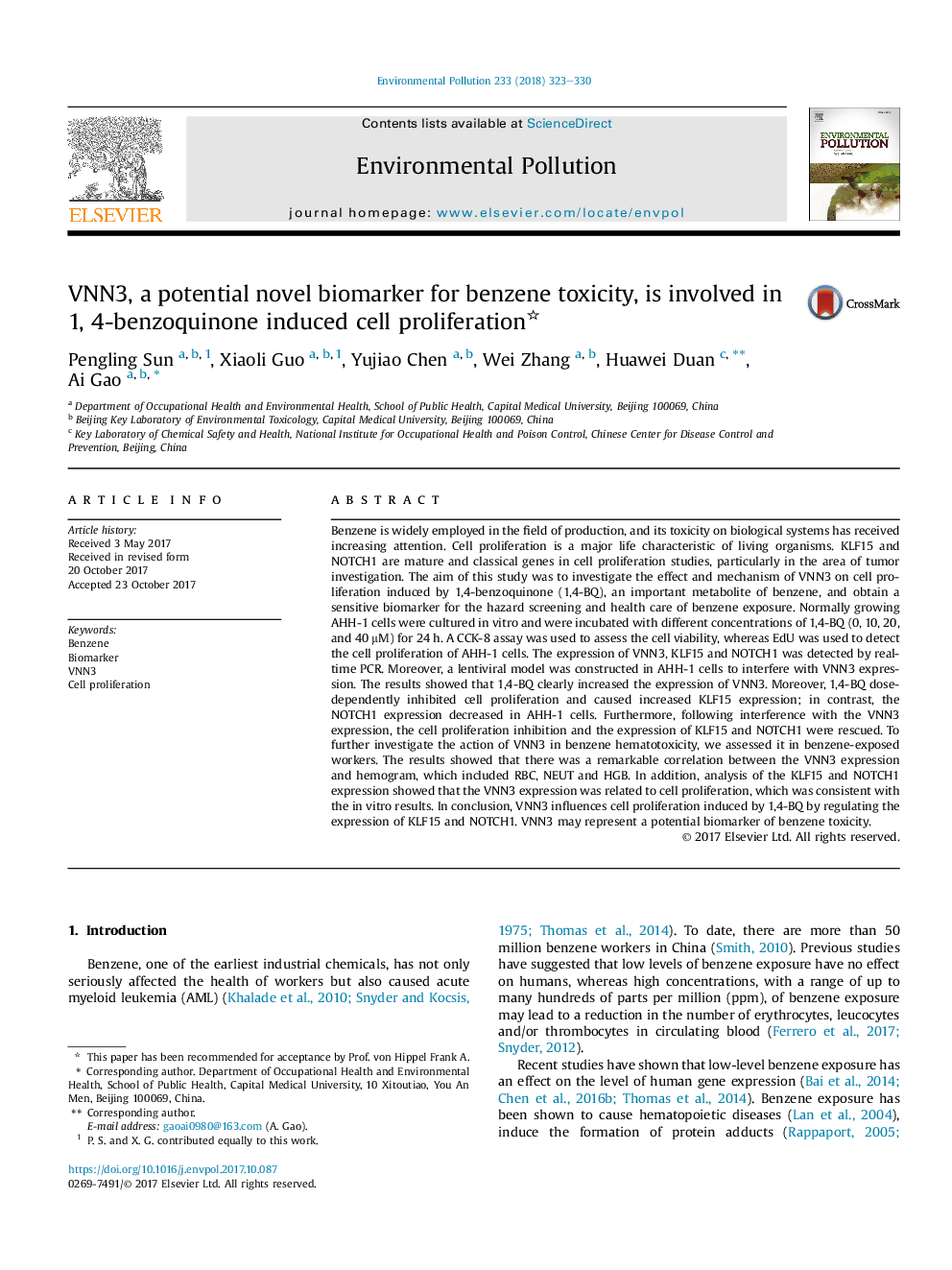| کد مقاله | کد نشریه | سال انتشار | مقاله انگلیسی | نسخه تمام متن |
|---|---|---|---|---|
| 8857437 | 1619139 | 2018 | 8 صفحه PDF | دانلود رایگان |
عنوان انگلیسی مقاله ISI
VNN3, a potential novel biomarker for benzene toxicity, is involved in 1, 4-benzoquinone induced cell proliferation
دانلود مقاله + سفارش ترجمه
دانلود مقاله ISI انگلیسی
رایگان برای ایرانیان
موضوعات مرتبط
علوم زیستی و بیوفناوری
علوم محیط زیست
شیمی زیست محیطی
پیش نمایش صفحه اول مقاله

چکیده انگلیسی
Benzene is widely employed in the field of production, and its toxicity on biological systems has received increasing attention. Cell proliferation is a major life characteristic of living organisms. KLF15 and NOTCH1 are mature and classical genes in cell proliferation studies, particularly in the area of tumor investigation. The aim of this study was to investigate the effect and mechanism of VNN3 on cell proliferation induced by 1,4-benzoquinone (1,4-BQ), an important metabolite of benzene, and obtain a sensitive biomarker for the hazard screening and health care of benzene exposure. Normally growing AHH-1 cells were cultured in vitro and were incubated with different concentrations of 1,4-BQ (0, 10, 20, and 40 μM) for 24 h. A CCK-8 assay was used to assess the cell viability, whereas EdU was used to detect the cell proliferation of AHH-1 cells. The expression of VNN3, KLF15 and NOTCH1 was detected by real-time PCR. Moreover, a lentiviral model was constructed in AHH-1 cells to interfere with VNN3 expression. The results showed that 1,4-BQ clearly increased the expression of VNN3. Moreover, 1,4-BQ dose-dependently inhibited cell proliferation and caused increased KLF15 expression; in contrast, the NOTCH1 expression decreased in AHH-1 cells. Furthermore, following interference with the VNN3 expression, the cell proliferation inhibition and the expression of KLF15 and NOTCH1 were rescued. To further investigate the action of VNN3 in benzene hematotoxicity, we assessed it in benzene-exposed workers. The results showed that there was a remarkable correlation between the VNN3 expression and hemogram, which included RBC, NEUT and HGB. In addition, analysis of the KLF15 and NOTCH1 expression showed that the VNN3 expression was related to cell proliferation, which was consistent with the in vitro results. In conclusion, VNN3 influences cell proliferation induced by 1,4-BQ by regulating the expression of KLF15 and NOTCH1. VNN3 may represent a potential biomarker of benzene toxicity.
ناشر
Database: Elsevier - ScienceDirect (ساینس دایرکت)
Journal: Environmental Pollution - Volume 233, February 2018, Pages 323-330
Journal: Environmental Pollution - Volume 233, February 2018, Pages 323-330
نویسندگان
Pengling Sun, Xiaoli Guo, Yujiao Chen, Wei Zhang, Huawei Duan, Ai Gao,